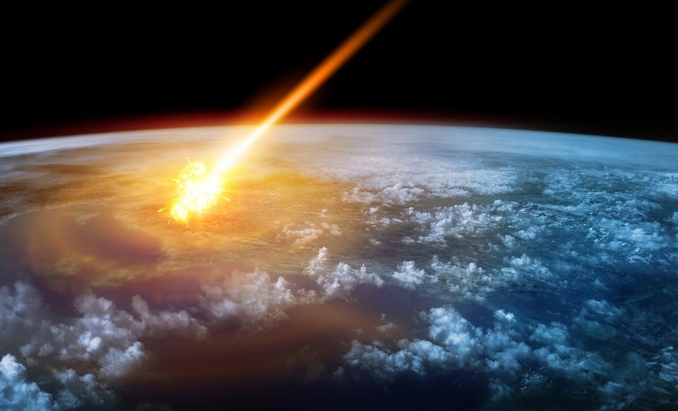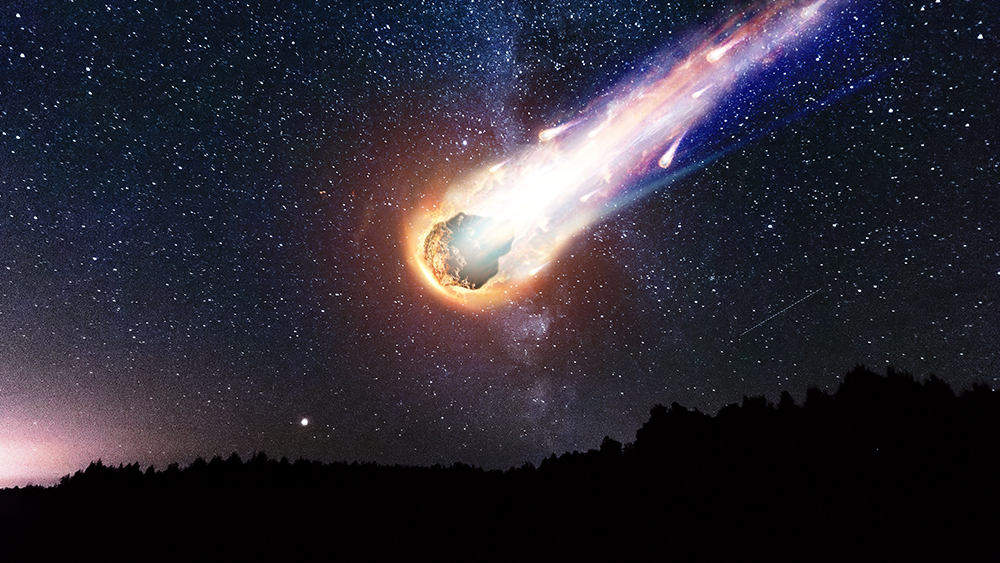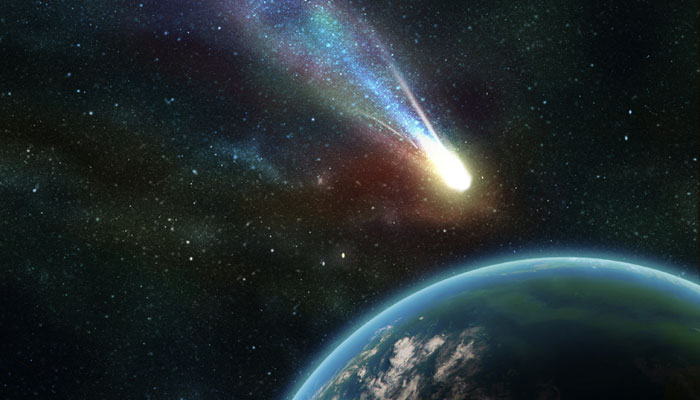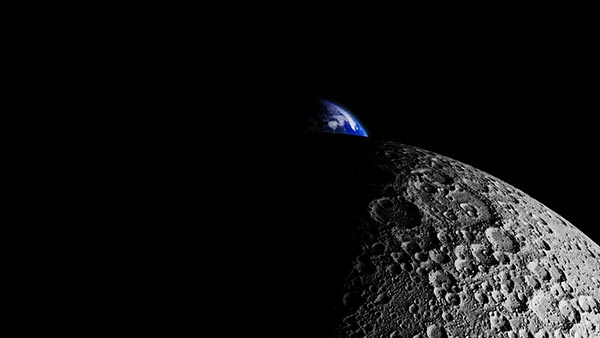NASA is hiding crucial details about asteroids that could THREATEN Earth, warns senior SETI Institute astronomer
12/12/2024 / By Zoey Sky

- On Dec. 3, a 70-cm asteroid entered Earth’s atmosphere and exploded over Siberia. The event underscored the risks posed by larger asteroids, which could cause significant damage or even global disasters.
- NASA and ESA monitor Near-Earth Objects (NEOs) but cannot cover the entire sky due to limited resources. The Siberian asteroid was detected just seven hours before impact, highlighting the need for better early detection systems. Most advanced telescopes are concentrated in specific regions, leaving “dark zones” vulnerable to undetected asteroids.
- Amateur astronomers can help fill monitoring gaps with affordable telescopes and citizen science networks. UNISTELLAR, founded by Dr. Franck Marchis, connects amateur astronomers so they can help monitor asteroid trajectories and assess threats. Collaboration with professionals ensures faster and more accurate identification of potential impacts.
- NASA’s DART mission successfully demonstrated asteroid deflection in 2022, but early detection is critical for effective defense. Expanding monitoring networks, which includes amateur astronomers involvement, is essential for identifying threats years in advance.
- Amateur astronomers and citizen scientists play a vital role in planetary defense by observing and reporting potential threats. Projects like Dark Energy Explorers engage volunteers in galaxy mapping and understanding dark energy, showcasing the power of collective effort in space exploration. The future of planetary defense depends on the collaboration between professionals and citizens to protect Earth from cosmic dangers.
On Dec. 3, the small asteroid COWECP5 streaked into Earth’s atmosphere and exploded in a fiery display above Siberia. While the event was dramatic, it was ultimately harmless because the space rock was only 70 centimeters across and disintegrated before it could cause any damage.
But for people who study asteroids, this near-miss was a stark reminder of the dangers lurking in the cosmos. What if that asteroid had been bigger? What if it had been a “city killer?” Earth is far more vulnerable to asteroid impacts than most people realize, and the systems in place to protect the planet are far from perfect.
The National Aeronautics and Space Administration (NASA) and the European Space Agency (ESA) are tasked with keeping an eye on Near-Earth Objects (NEOs), the term used for asteroids and comets that come dangerously close to the planet.
These agencies have sophisticated telescopes and advanced tracking systems, but the reality is that they can’t monitor the entire sky all the time. The Siberian asteroid was only spotted by a NASA-funded telescope in Arizona seven hours before it hit Earth. While that might sound like plenty of time, it is actually a dangerously short window.
If the asteroid had been larger, it could have caused significant damage on the ground. And if it had been a true “city killer,” like the 400-meter-wide asteroid that astronomers feared would hit Earth on Christmas Day in 2004, seven hours would not have been enough time to evacuate millions of people or devise a defense strategy.
The fact is, there simply are not enough professional astronomers and telescopes to cover every possible angle. Most of the world’s advanced telescopes are concentrated in a few regions, leaving vast “dark zones” where no one is watching.
This means that asteroids coming from certain directions — like over Japan or Russia — could slip through the cracks. While NASA and ESA are doing their best, they are fighting an uphill battle against the sheer number of space rocks out there.
Every day, Earth is bombarded by an estimated 100 tons of space debris, most of which burns up harmlessly in the atmosphere. But every now and then, something much larger and more dangerous appears.
Astronomers have identified 36,765 NEOs, including more than 11,000 that are over 140 meters across and 868 that are larger than a kilometer. Out of those NEOs, 1,714 are considered potentially hazardous, meaning there’s a non-zero chance they could collide with Earth.
But even relatively small asteroids can cause catastrophic damage. The Chelyabinsk meteor, which exploded over Russia in 2013, was only 18 meters in diameter. However, it injured over 1,600 people and damaged more than 7,000 buildings.
Larger asteroids, like the one that narrowly missed Earth in 2004, could wipe out entire cities or even trigger global disasters.
According to Dr. Franck Marchis, a senior astronomer at the SETI Institute, an asteroid larger than 120 meters will strike Earth about once every 10,000 years. “This shows that, if we want our civilisation to last for a long period of time,” he says, “we need to look around us and characterise those objects.” (Related: Evidence of alien life could be made public next month, says filmmaker.)
Amateur astronomers and planetary defense
Marchis explained that the solution lies in recruiting amateur astronomers to help monitor the skies.
While professional telescopes are powerful, they are few and far between. On the other hand, amateur astronomers are everywhere – and with the right tools, they can make a huge difference.
In 2015, Marchis founded UNISTELLAR, a network of citizen astronomers equipped with “smart telescopes” that can track objects in space and share their observations with a global database. When NASA and ESA spot something suspicious, they notify the Minor Planet Center, which alerts amateur astronomers in the UNISTELLAR network.
These citizen scientists then use their telescopes to refine the observations, helping confirm the asteroid’s trajectory and determine whether it poses a threat.
This collaboration proved crucial in the case of the recent asteroid over Eastern Siberia. After it was spotted by NASA, amateur astronomers in Japan and Australia used their telescopes to pinpoint exactly where and when it would hit. Thanks to their efforts, it was determined that the asteroid would burn up in the atmosphere, and no further action was needed.
But if the asteroid had been larger, these citizen scientists would have played a key role in identifying the danger zone and coordinating an evacuation.
Of course, knowing when an asteroid is coming is only half the battle. If humanity is to survive in the long term, there should also be a way to stop these space rocks before they hit Earth. Fortunately, there’s reason for hope.
In 2022, NASA’s Double Asteroid Redirection Test (DART) mission successfully demonstrated that it’s possible to deflect an asteroid using a spacecraft. The DART probe slammed into a distant asteroid, knocking it slightly off course.
While the full results won’t be confirmed until 2026, early data suggests that the mission was a success. However, to deflect an asteroid, Earth must have years of warning, not hours. That’s why it’s critical to expand current monitoring efforts and identify potential threats as early as possible.
By filling in the “dark zones” with small, affordable telescopes, amateur astronomers can help create a global network capable of watching the entire sky all the time.
Space agencies need help from ordinary people
The truth is, NASA and ESA can’t do this alone. They need help from ordinary people with a passion for astronomy.
Whether you’re a seasoned stargazer or a complete beginner, there’s a role for you in planetary defense. All you need is a telescope (or even just a pair of binoculars) and a willingness to look up at the stars.
As of writing, astronomers on an ambitious and large-scale galaxy-mapping mission have activated more than 10,000 amateur scientists in 85 countries to help in their quest. They are also currently trying to significantly scale up their volunteer force for a unique project that could reveal for the first time the nature of dark energy.
The research project known as the Hobby-Eberly Telescope Dark Energy Experiment (HETDEX) is based at The University of Texas at Austin’s McDonald Observatory. It welcomes volunteers to participate online in a project called Dark Energy Explorers.
Using their smartphones or computers, volunteers can take a closer look at the mysteries of the universe while also helping professional astronomers find distant galaxies and learn more about the mysterious force known as dark energy, which is causing the universe to rapidly expand.
Since Dark Energy Explorers launched in February 2021, more than 10,000 volunteers have identified an estimated 240,000 galaxies. That is equivalent to at least one-tenth of the number of galaxies that the researchers expect to ultimately find in their survey of a patch of sky that is about the size of 2,000 full moons.
The universe is vast and full of mysteries, but it’s also full of dangers. If humanity wants to protect the planet – and the future – everyone must work together.
Visit Space.news for similar stories about space and space exploration.
Watch this clip to find out when scientists will know if asteroids will strike Earth in 2029.
This video is from the TruNews channel on Brighteon.com.
More related stories:
China’s Mars rover may have stumbled across a lost ancient ocean on the Red Planet.
Strange blue orb seen speeding past New York City skies.
Elon Musk: Aliens could be here on Earth RIGHT NOW.
NASA only provided a 7-hour warning before asteroid collided with Earth.
Sources include:
Submit a correction >>
Tagged Under:
asteroid, big government, cosmic, cosmic impacts, COWECP5, dangerous, disaster, ESA, European Space Agency, Franck Marchis, NASA, national security, SETI Institute, space, Unistellar
This article may contain statements that reflect the opinion of the author
RECENT NEWS & ARTICLES
COPYRIGHT © 2023 AncientComets.com
All content posted on this site is protected under Free Speech. AncientComets.com is not responsible for content written by contributing authors. The information on this site is provided for educational and entertainment purposes only. It is not intended as a substitute for professional advice of any kind. AncientComets.com assumes no responsibility for the use or misuse of this material. All trademarks, registered trademarks and service marks mentioned on this site are the property of their respective owners.




















